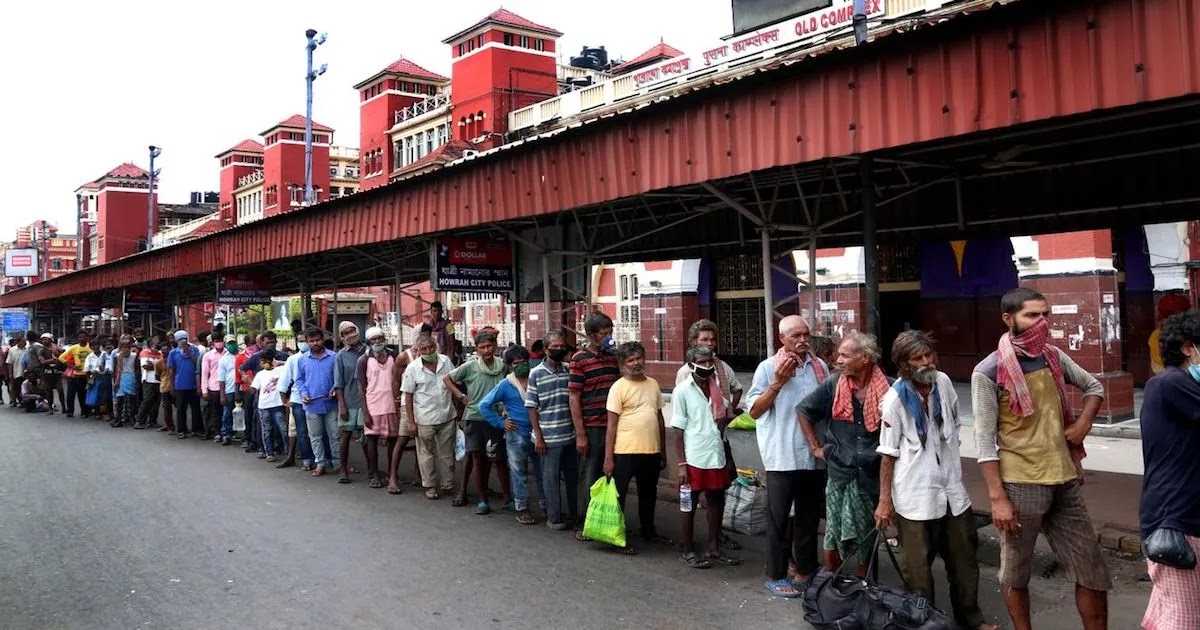
Photo: People waited to receive free food in Kolkata in September. DEBAJYOTI CHAKRABORTY/NURPHOTO/ZUMA PRESS
The World Bank has estimated that the ongoing CoVid-19 pandemic has pushed between 88 million and 144 million more people into extreme poverty. The statement comes as the pandemic begins a second wave across much of the industrialised world.
It is the largest increase in poverty since 1990 when, during the fall of the Soviet Union, millions of Russians, Ukrainians and others in former Soviet countries lost their social safety net.
The World Bank calculates 'extreme poverty' as living on less than $1.90 per day and estimates that 729 million people, around 10% of the world's population, now find themselves in this economic situation, whereby even the basic necessities to maintain life are often out of reach. The fall in prosperity dwarfs the slow down in poverty reduction during the late 2000s financial crash.
What also sets this collapse in living standards apart is the demographics of those entering poverty. While most extreme poverty was formerly consigned to rural agricultural areas, far more people who live in cities and towns are entering poverty. This, in itself, is also likely to increase the chance of social breakdown and political upheaval.
The World Bank said in the report:
"The new poor are more urban, better educated and less likely to work in agriculture than those living in extreme poverty before CoVid-19 … The convergence of the CoVid-19 pandemic with the pressures of conflict and climate change will put the goal of ending poverty by 2030 beyond reach without swift, significant and substantial policy action."
The last few decades have seen an unparalleled fall in the number of people living in extreme poverty globally. 30 years ago, 1 billion people worldwide lived in extreme poverty, this number is now under 800 million, and as an overall percentage of the world population, it is also much smaller. However, many have criticised this analysis for stating that the $1.90 cut-off is far too basic and does not take into account other factors.
It is also clear from the evidence that almost all of those taken out of extreme-poverty live in either China and Vietnam with very few emerging out of poverty in Latin and Central America, the Indian-subcontinent and Africa. In Africa alone, the number in poverty has risen from 440 million in 1990 to 480 million in 2020, a rise from 40% to 42%.














COMMENTS